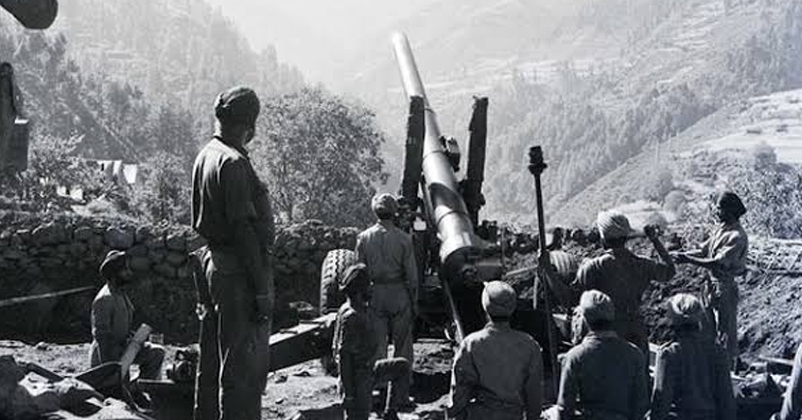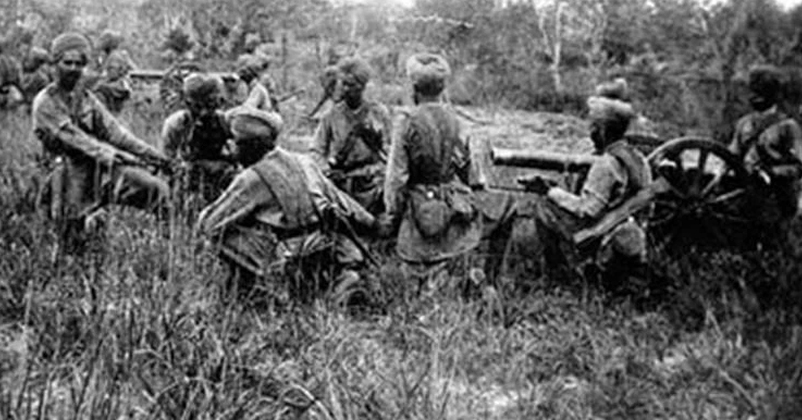Story of 1947- Brutal Invasion from Pakistan in Jammu Kashmir, India fought back to rescue the state
01 Nov 2019 18:17:19

When the dominions of India and Pakistan were formed, all the princely states were given the option to join either of the dominions. They didn’t have the option to remain independent. The only condition for the accession of these princely states into the respective dominions was geographical continuity. The method of integration was signing the instrument of accession. The accession of princely states was not on the basis of religion, it was solely the decision of the ruler or king of that state.
As far as Jammu-Kashmir is concerned, Pakistan wanted to conquer it because of its strategic importance. The area of Gilgit Baltistan opens in international borders, thus it was strategically a very important location. Britain wanted J&K to accede to Pakistan in order to create an Islamic wall so that Communist USSR could not enter Asia. On the other hand, Maharaja Hari Singh did not want to join Pakistan. By the latter half of October 1947, the government of India was in close touch with the situation in Kashmir. The Maharaja had also informed them about the worsening situation within the state and sought help in controlling it. Direct assistance of the Indian army was out of question till Jammu and Kashmir had acceded to India. But before any help could actually be sent, the tribesmen had invaded Kashmir, changing entirely the complexion of affairs. Pakistan attacked Jammu-Kashmir on 22nd October, 1947. It was only on 24th October that the government of India got the first news of the invasion of Kashmir.
A message was received from Pakistan army headquarters that day, informing the Supreme commander that "tribesmen estimated 5000 Afridis, Wazirs, Mahsuds, Swatis attacked Muzaffarabad and Domel capturing both on 22nd October. Tribesmen reported approaching Srinagar. Kohala in danger of being attacked. Tribesmen in large numbers expected to go Kashmir." Then, at 11 pm the same night, an urgent request was received from Maharaja Hari Singh specifically asking for Indian troops to be sent to Kashmir to save it from the invaders. Srinagar was over 480 km from the nearest point of the Indian border. Troops in the east Punjab were fully engaged in rescuing refugees and maintaining law and order.

Maharaja Hari Singh, on the advice of V.P. Menon (Secretary, Ministry of States, Government of India), left Srinagar for Jammu late that night to escape from being captured by the raiders who could then extract from him whatever they wanted. It was decided that the Indian troops would be sent to the state only after its formal accession to India. In order to rescue the territory from the clutches of Pakistan, Maharaja Hari Singh signed the instrument of accession in favour of India and thereafter, Indian troops were sent to J&K to drive away Pakistani tribals. V.P Menon flew to Jammu that afternoon and immediately returned with the formal Instrument of Accession signed by the Maharaja. With the acceptance of this legal document by the Governor-General of India on the evening of 26 October 1947, the state of Jammu and Kashmir became an integral part of the Indian dominion, legally, morally and constitutionally. After the accession, Pakistan should have stopped the invasion of J&K but instead it continued its intrusion. When the Governor-General of Pakistan came to know of the dispatch of Indian troops to Srinagar on 27th October, he became furious and sent instructions to Gen Sir Douglas Gracey, the acting commander-in-chief of the Pakistan army, to move the army to Kashmir and seize Baramulla, Srinagar and the Banihal Pass as well as to move into Mirpur district of Jammu. The next morning, Field Marshall Auchinleck came to Lahore to explain to Jinnah that in the view of accession of J&K to India, the dispatch of Indian troops to Srinagar was perfectly legal, and if the Governor-General of Pakistan insisted on sending his army to Jammu and Kashmir, all British officers and men serving in the Pakistan army would have to be pulled out at once. Consequently, Jinnah had to climb down and cancel his orders.
With J&K becoming a part of India in law, it was most urgent to throw back the invaders. In the army headquarters, Brig Kalwant Singh, the acting CGS, took urgent steps to find and prepare the troops to be sent to Srinagar. It was commanded by Lieut-Colonel D.R. Rai. To save the state from the invaders, one battalion was to be flown immediately to Srinagar and later a Brigade group would be moved to Jammu. So uncertain was the situation in the valley that that Lieut-Colonel Rai was instructed to encircle the Srinagar airfield and carefully scan the countryside in case the raiders had already occupied it. The Srinagar landing ground, situated at an altitude of 1524 metres, fell far short of international standards, and was not even regularly maintained. It was an indication of unique uncertainty, hazards and difficulties faced by the Indian troops when they went to Kashmir.
After an uneventful flight, the Dakota carrying Lt-Colonel Rai touched down at Srinagar airfield on the morning of 27th October, 1947. On the same day, a message was received at Delhi saying that Baramulla had definitely fallen and was in flames. In all, only some 700 men of the state forces were available and at least two companies of Indian troops were urgently required to patrol north and south of the main road in order to prevent the enemy from by-passing the Sikh positions during the hours of darkness. Brigadier Hira Lal Atal reported that the civil administration had ceased to exist, refugees were thronging the airport and at least one brigade would be required for the defense of the valley.
At the same time, on 27th October, Delhi and east Punjab Command was ordered to establish a proper line of communication from Pathankot to Jammu as soon as possible. The defenders of Srinagar passed the night of 27/28 October in vigilance in their hastily dug positions east of Baramulla, but no attack developed that night. The next morning, after the arrival of Lt-Colonel Rai, the enemy began a big attack in order to push through and reach Srinagar. Bitter fighting took place and the attackers were held. When the enemy began to encircle his position, Rai went back and selected another defensive position 8 km nearer to Srinagar. He ordered his men to withdraw to the new positions. While seeing off the last of the rearguard, Lt-Colonel Rai was hit in the head by a stray bullet and fell. Death was almost instantaneous. Rai was given posthumously the award of Maha Vir Chakra.
On 28th October, Delhi and east Punjab command were ordered to carry out phase 2 of the operation and dispatch one of the Brigade group to Jammu via the Pathankot road and at the same time one brigade headquarters, a signal section, one infantry battalion, and one platoon of medium machine guns to Srinagar. The situation remained critical in the valley on 28th October. The position in the evening of 29th October was distinctly better. By the reports available, it appeared that only about 500 of the invaders were trying to push directly along the Baramulla-Srinagar road, although they were the best-equipped troops among the raiders and were adequately supplied with mortars, machine guns and mechanical transport.
On 30th October, reports indicated greater numbers of the enemy in the Pattan area. There were about 200 Lorries, and the men were estimated to total 1500-2000. In the evening, the main position near Pattan was attacked by some 1000 raiders, who approached to within 55 meters of the defensive positions, but were then held up and thrown back. On 31st October, no major engagement took place in the valley.
On 1st November 1947, a fairly heavy attack was launched by the raiders against the 1 Sikh position, but was repulsed without difficulty. On 3rd November, news was received from the Pakistan army that on 31st October a coup d’etat had taken place at Gilgit as a result of which the representatives of the state’s lawful government there had been overthrown and the area had passed under the control of the so-called Azad-Kashmir government. The next day, 4th November 1947, Sardar Patel, the deputy Prime Minister and Sardar Baldev Singh, the defense minister, flew down to Srinagar to observe things on the spot and to study the situation. They returned the same evening to Delhi and apparently impressed on the cabinet the need for further urgent reinforcements in Srinagar.
On 6th November, the Indian army headquarters ordered Delhi and East Punjab command that the Kashmir valley was to be held at all costs and close liaison was to be maintained between the Indian commander and Sheikh Abdullah, who had been appointed the Administrator of Kashmir. Any incident of communal nature was to be severely repressed and all help was to be given to the Kashmir Home Guards including rifles and facilities for training. By the evening of 6th November, the critical days for Srinagar were over and the threat to Srinagar was driven back finally on 8th November. With this, the liberation of the Kashmir valley was complete.